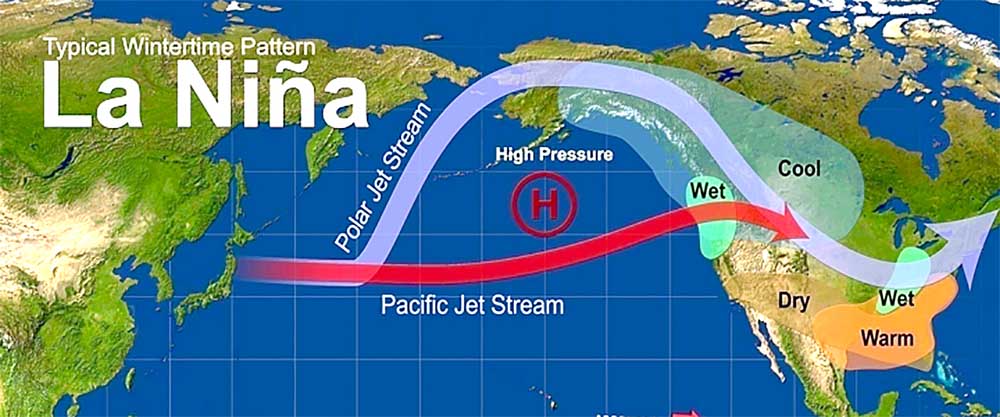La Niña looks like best bet for next winter
Published 11:52 am Friday, May 13, 2022

- A graph shows typical North American weather during La Niña years, with wetter than usual conditions in the Pacific Northwest.
Odds increasingly favor La Niña prevailing for a third straight winter, the National Weather Service says.
Trending
The weather service’s Climate Prediction Center pegged the chances for another La Niña winter at 61%, up from 54% last month.
La Niña winters in the northern tier of the U.S. are generally cooler and wetter than normal. Three La Niña winters in a row have occurred only twice since 1950.
Although ample summer water supplies usually follow a La Niña, it’s not a sure bet, Washington State Climatologist Nick Bond said May 13.
Trending
The last third-straight La Niña winter, 2000-2001, yielded a poor water supply for summer irrigation and led to a drought.
“There’s no guarantee there’s going to be a huge snowpack,” Bond said.
Below-normal sea-surface temperatures in the Pacific Ocean trigger a La Niña. While the northern U.S. tends to be cold and wet, the southern tier leans toward being hot and dry. Another La Niña winter could worsen the drought in the Southwest.
La Niña and its opposite, El Niño, are climatologists’ main guides for forecasting weather months in advance. The climate center puts the odds of an El Niño forming next winter at only 5%. The odds that sea-surface temperatures will be normal, or neutral, are 34%.
A La Niña has formed the past two winters and is still in place. The climate center said ocean temperatures this past week were “quite negative” for this time of year.
Normally, La Niña has its most influence on Northwest weather in the late winter. This year, it’s effects may be lasting into the spring. “I’m prepared to believe that,” Bond said.
Washington just had its third coldest April in 128 years of record-keeping. The snowpack rallied during the month from below average to finish above average.
Natural Resources Conservation Service water supply specialist Scott Pattee said May 13 the snowpack has peaked, but is melting slowly because of low temperatures.
La Niña likely will stay through the summer, according to the climate center. Bond said he then expects its influence to wane and that the state will follow a trend toward warmer and drier summers.
A La Niña prevailed for 38 months from April 1973 to May 1976, and for 34 months from June 1998 to March 2001.









